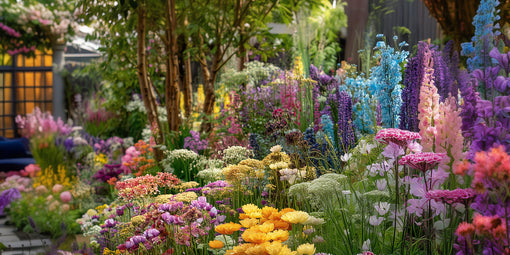
- Article published at:
Drawer menu

We love to incorporate natural elements in our autumnal and Halloween décor to give it a rustic and inviting feel.
Unlike Christmas wreaths that has a green wreath base made out of pine, we think that a natural twine or rattan wreath base works best for autumn wreaths and gives it that organic look. The colours you want to stick to when decorating your Halloween wreath is yellow, orange, beige, brown and burgundy red.
Start by attaching the leaves and dried foliage to the base of the wreath by sticking them in in between the twine. You can also use the glue gun at this point to make sure the leaves are extra secure.
Keep in mind to attach them slightly overlapping one another yet loose and facing the same direction. Mix the colours of the leaves and foliage to create a natural and wild look. Cover the whole front of the wreath.

Next step is your pampas grass and wheat. Again, stick the stems down facing the same directions as the leaves and slightly out towards the sides. Focus on covering the side of the wreath. Cut the stems down a bit so they won’t poke out on the other side.

Lastly add your decorations. Here you can really use your imagination and choose anything you think would look good on your wreath.
If you're making the wreath for Halloween we suggest using using decorations such mini pumpkins, dried orange slices, berries, Chinese lanterns, yellow Craspedia flower and pinecones.

The decorations are best to attach with a glue gun or wire since they easier fall off when it gets windy. Place all your decorations on top of the wreath before you start attaching them so you can see roughly where you want them to go.
A tip is to make 3 bigger clusters of decorations around the wreath and spread smaller decorations around. For example, glue a mini pumpkin, pinecone and berries close together.
Repeat this on two other places on the wreath and then add smaller decorations in between the clusters. Finally fasten it on your front door using a ribbon or fishline.
Good luck!